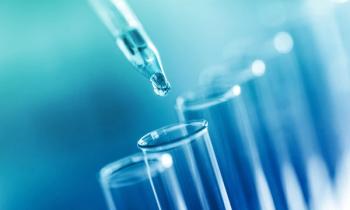
Galimedix Therapeutics completes single ascending dose portion of phase 1 trial assessing GAL-101
The trial assesses GAL-101 as an oral therapy designed to treat Alzheimer disease, dry age-related macular degeneration, and glaucoma.
Phase 2 clinical stage biotechnology company Galimedix Therapeutics has announced the completion of the single ascending dose (SAD) portion of its phase 1 study assessing GAL-101, an oral therapy designed to treat Alzheimer disease, dry age-related macular degeneration (AMD), and glaucoma.1 The small molecule is specifically designed to target misfolded amyloid beta (Aβ) monomers, according to a news release.
The next arm of the study, which includes multiple ascending dose, is underway and is expected to be completed in late 2025.1
“The successful completion of the single ascending dose part of our Phase 1 trial with oral GAL-101 marks an important step forward in our clinical development,” Hermann Russ, MD, PhD, cofounder and chief scientific officer of Galimedix, said in the release. “The data we have seen so far support the safety, tolerability and pharmacokinetic profile we anticipated and reinforce the potential of GAL-101 as an oral therapy for CNS [central nervous system], eye and other diseases associated with amyloid beta pathology, including Alzheimer’s disease. We are proceeding according to plan and are now moving confidently into the next parts of the study, which we are on track to complete later this year.”
In the SAD section of the study, 40 healthy patients were randomly assigned 3:1 to receive either GAL-101 or placebo capsules. GAL-101 was shown to be well tolerated with a highly favorable safety profile, while also demonstrating “an excellent pharmacokinetic profile, strongly supporting the planned oral administration route,” the release said.
The phase 1 trial is ultimately designed to enroll up to 120 patients and is planned to address all relevant aspects required to initiative the planned oral phase 2 studies in Galimedix’s key indications—Alzheimer disease, dry AMD, and glaucoma.1 While the phase 1 trial is ongoing, the company is also conducting a phase 2 eDREAM clinical trial with GAL-101 eye drops for dry AMD. The eDREAM study is expected to complete recruitment in less than a year, according to the release.
In targeting misfolded Aβ monomers, GAL-101 works to prevent the formation of toxic Aβ oligomers and protofibrils. “Many studies have indicated that these Aβ aggregates are a major underlying cause of neurodegenerative diseases of the eye, and recent approvals of anti-Aβ drugs have also validated them as a key target in Alzheimer’s disease,” the release stated. Preclinical testing of GAL-101 demonstrated the compound’s ability to prevent and eliminate all forms of toxic Aβ species while leaving healthy Aβ forms intact. GAL-101 also demonstrated potential for neuroprotection and for symptomatic alleviation of Alzheimer disease in preclinical models of the disease.1
A previous phase 1 study assessed GAL-101 in the form of an eye drop and demonstrated excellent safety and tolerability. GAL-101 in its oral form has shown no antibody-specific immunological side effects, such as amyloid-related Imaging abnormalities, low systemic toxicity, strong storage stability, and “easy and inexpensive manufacturing,” the release stated. GAL-101’s efficacy in protecting neuronal retinal cells from toxic damage has otherwise been demonstrated in other relevant ophthalmic preclinical models.1
Reference:
Galimedix Therapeutics completes single ascending dose part of phase 1 study with oral small molecule, GAL-101, an amyloid beta aggregation modulator. News release. Galimedix Therapeutics. May 6, 2025. Accessed May 7, 2025.
https://finance.yahoo.com/news/galimedix-therapeutics-completes-single-ascending-120000532.html?guccounter=1&guce_referrer=aHR0cHM6Ly93d3cuZ29vZ2xlLmNvbS8&guce_referrer_sig=AQAAACgUyRp_ORP9y6GDtKFlLbKePeh5zKVSrjSvIw7kcT4Monkji7eUMIRf96oXxcHyQAdLkj2JTjeIxo5cPTiwmesFTrPWy8AuSH76fm0UwY_Q13QqpExryO9cA_HAT1MUnnSRXSD0OY5OM5id43VqIIspgFo-R7BqlO-wgaA_9QfY
Newsletter
Want more insights like this? Subscribe to Optometry Times and get clinical pearls and practice tips delivered straight to your inbox.













































